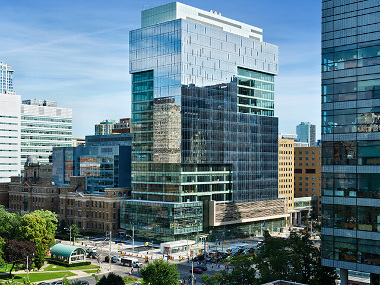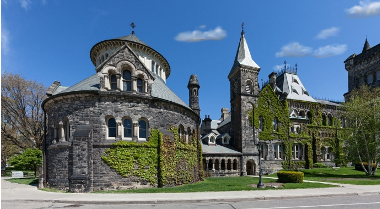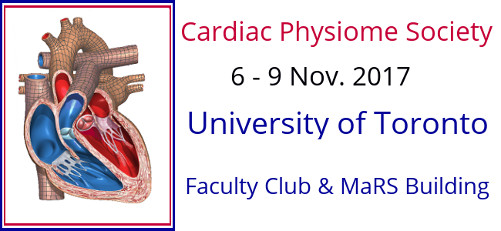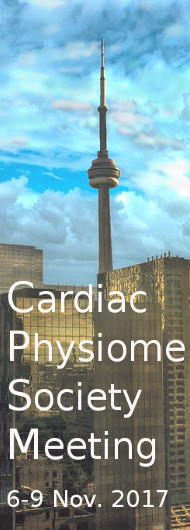Location:
The meeting will be held at two locations; both locations are located near the University of Toronto.

Entrance to University of Toronto Faculty Club
On Tuesday / Wednesday, Nov 7th and 8th, we will have the lectures, posters,
breakfast, and lunch will be at the
University of Toronto Faculty Club, on the St George
Campus, at 41 Willcocks St. just east of Spadina and west of Huron, and two blocks north from
College St, walking distance in about 15-20 minutes from the Chelsea Hotel (at 33 Gerrard St W,
just east of Bay St.).

Meeting Room in University of Toronto Faculty Club
On Thursday, Nov 9 th , the morning tutorial/technical session will be in the Toronto General Hospital (TGH: 200 Elizabeth Street - Eaton Wing, Ground Floor, Medical Education Room 025/026), 5 minutes from the Chelsea Hotel.
Lunch will be in the MaRS West Tower (661 University Avenue) at the 14 th floor TBEP (Translational Biology and Engineering) lounge. Take a ground level indoor walk from the TGH to MaRS West and elevator to TBEP lounge.
At 1:00 PM, the CiPA (Comprehensive In-vivtro Pro-arrhythmia Assay)Satellite meeting starts in the TGH 025/026.

MaRS Building on University and College
Theme:
The “physiome” is the quantitative and integrated description of the physiological state of a cell, tissue, organ or organism. A next step for the Cardiac Physiome is to determine how the biochemistry and cell biology of the heart is driven by cardiac mechanics, changing the selection of substrates for energy production and regulating protein transcription and degradation. How are the signals governing transcription and intracellular delivery regulated to get the right gene products in place "just in time". What are the pathways for initiating responses to stress or changes in activity? Using mathematical models to defining a coherent self-consistent system as a basis to design new experiments to put integrative hypotheses to the test is robust experimentation.
The models have to be rather comprehensive to use them with confidence to design experiments. Currently the most mathematically advanced fields of cardiac research are electrophysiology and mechanics, from channel or cross-bridge to whole heart, but neither field is tightly related to cell biochemistry. A goal of this Cardiac Physiome meeting is to fill in this gap by focusing the conference on metabolism/excitation and metabolism/contraction. There is a dearth of specific data at these interfaces, but there are lots of good hints, and we would like the meeting to target how metabolism in particular and the Cardiac Physiome in general is driven by these and other external influences.
This is an opportunity not only for multidisciplinary participation but also for developing collaboration in research and teaching. We hope the conference will demonstrate aspects of metabolism are linked to electrophysiology and mechanics to cardiac function. The accelerating research in cardiac metabolism is providing data that will help to define the Cardiac Metabolome. No doubt it will require team development and collaboration to develop large scale systems integration of cell-to-organ-to-system mathematical models.

Croft Chapter House at the University College, University of Toronto
Speakers and Agenda:
The full program will be announced after abstracts have been received. We are honored to have as key speakers Heinrich Taegtmeyer, Gary Lopaschuk and Robert Balaban.
Reception and Meals
The reception on Nov. 6th will be from 6:30 - 8:00 pm at the Chelsea Hotel. Breakfasts on the 7th and 8th are at the Faculty club. Lunches and a light tea are also slated at the Faculty Club on the 7th and 8th. The conference banquet is on the evening of the 8th at the Faculty Club. For the tutorial session and CiPA session, snacks and/or meal options are still evolving. The evening of the Nov 7th is unscheduled. See restaurant list under TORONTO INFORMATION.
|

